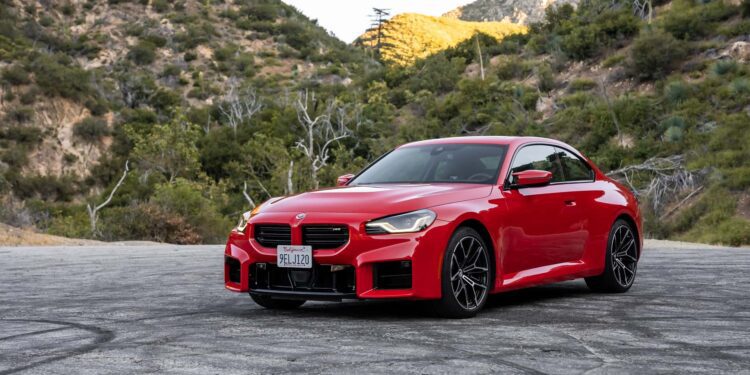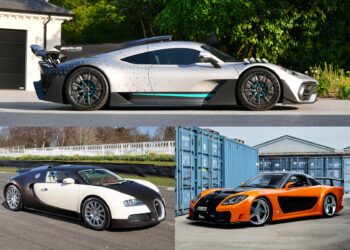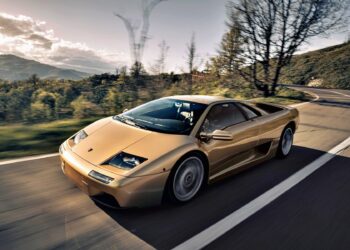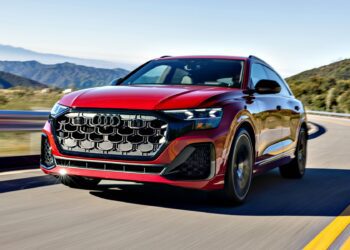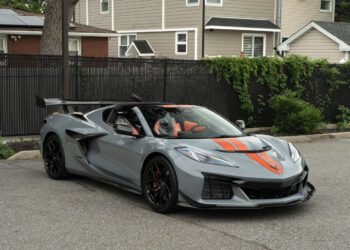The BMW M2 has always been a bit of a bargain within the M model range. Previously, it housed a powerful inline-six engine that sent power to the rear wheels in a genuinely small and light body. And despite costing less than an M4, it delivered a tail-happy driving experience that was arguably more enjoyable than its larger sibling’s.
For 2023, much has changed. The new M2 is longer and heavier than the car it replaces, with front and rear track widths that match the M4s. Its S58 engine now delivers an extra 48 horsepower, while its close-ratio eight-speed auto allows it to sprint to 60 mph in 3.9 seconds. It may still be M’s “entry-level” model, but the M2 is now more capable than ever, even if it’s no longer the tail-happy thriller it once was.
While it may not be as playful or raw as its predecessor, a more focused and grown-up persona suits the M2 well.

Quick Stats
| Engine | Twin-Turbocharged 3.0-Liter Inline-Six |
| Output | 453 Horsepower / 406 Pound-Feet |
| 0-60 MPH | 3.9 Seconds |
| Base Price | $63,195 |
| As-Tested Price | $66,945 |
When it debuted last year, the internet was way too quick to bash the M2 because of its styling. This is a car that looks significantly better in person than it does in photos. Online, it’s tough to judge its proportions or see how far its arches extend. The same goes for its front end, which features massive air intakes that protrude forward. The whole front fascia is open to let air through, only slowed by subtle horizontal trim pieces.
Its front end is stacked with cooling elements, including a radiator, intercooler, engine oil cooler, and transmission oil cooler. Thus it needs large openings feeding heaps of air through. Thankfully, BMW was able to split the frameless kidney grilles from the lower intake, saving the M2 from wearing its siblings’ controversial vertical openings.

Comparatively, its rear is relatively tame, combining a subtle gloss black diffuser, quad exhaust tips, and a rear bumper that extends far beyond its trunk lid. These details are easily lost in cars finished in dark colors, but my tester’s Toronto Red highlights them well.
The M2 is now 4.1 inches longer, 1.3 in wider, and 0.3 in lower than its predecessor. While its length received the greatest stretch, its wider stance stands out the most. Its track width now matches the M4s, understandable given that M’s smallest offering rides on a shortened version of its sibling’s architecture.
Its staggered wheelset now measures 19 in upfront and 20 in out back. The whole package weighs 3,867 pounds equipped with the auto or 3,814-lb with the six-speed manual, both up around 400-lb over its predecessor.

So it’s larger and heavier than before, but does it matter? Sort of. To lug around the extra heft, the M2’s twin-turbocharged 3.0-liter inline-six now develops 453 hp and 406 pound-feet of torque. Equipped with the ZF eight-speed auto, it’ll reach 60 mph in 3.9 seconds, or 4.1 seconds if you stick with the six-speed manual. In standard form, it’ll top out at 155 mph or 177 mph when equipped with the M Driver’s Package.
With stats like that, it won’t be surprising to learn that the latest M2 is outrageously quick, far quicker than the previous version. The added grunt plays a role, but so do its closely spaced gear ratios. My tester may have lacked a clutch pedal, but it fully used the available power, always staying well within the powerband.

Despite relying on two turbos to make big power, its inline-six responds almost instantly. Whether on an open highway or a twisty road, the M2’s power output perfectly matches its chassis. Although a beefed-up Competition version will arrive soon, the standard model has all the power you’d ever need or could use in the real world.
The widened stance is immediately noticeable in the bends, with the M’s smallest offering filling the lane from edge to edge. Coupled with 275/35 and 285/30 Michelin Pilot Sport 4S tires, the M2 never runs out of grip. Whereas its predecessor was eager to hang its tail out, this new car stays planted regardless of how hard you push.

What you don’t feel is the added weight as the body remains neutral; thanks mainly to its adaptive dampers and wider tires, the M2 is more agile and balanced than ever. This is where its grown-up nature comes in. It would rather focus on going as quickly as possible over messing around.
BMW’s M Traction Control system allows for 10 stages of stability control intervention, although you’ll rarely need any. With such capable suspension, wide stance, and sticky rubber, the M2 is easy to tame even with all its safety systems disabled.
Its brakes come straight off the M4, measuring 15 in up front with six-piston calipers and 14 in out back with a single-piston floating caliper setup. As you’d expect, given their size, they deliver excellent braking performance, providing good feedback through the pedal.

The M2 uses the same variable-ratio steering system as the M4, requiring small inputs that result in significant direction changes. While the system nicely matches the M2’s performance and agility, it lacks the feedback and rawness of its predecessor’s system. Its weighting is best in the more relaxed drive modes, as it artificially loads up too much in the more aggressive modes.
Notice that all of the M2’s bits that I’ve praised thus far come standard. As you’ll learn later, this tester has surprisingly few optional extras, with its as-tested price landing close to the model’s base figure. You won’t need to pay up to get the best version of the M2.

The most significant benefit of the M2’s new footprint becomes apparent when you step inside. Its cabin is now more spacious with more legroom thanks to its stretched wheelbase. Its cabin layout is nearly identical to an M4s, making it tough to tell which car you’re in just by looking out the window.
In front of the driver sit two screens, a 12.3-in digital cluster and a 14.9-in infotainment display nestled closely together. The pair run the latest iDrive 8 software along with wireless Apple CarPlay and Android Auto connectivity. Its native system utilizes a phone-style app layout which can be challenging to navigate while driving. This can be frustrating as many of the cabin’s core functions require interacting with the touch screen.

While the M2’s M Sport seats may look similar to the M4’s, they’ve been redesigned with more prominent side bolsters. These chairs may be the standard option, but they’re, without a doubt, the ones I’d opt for. I’ve had a love-hate relationship with BMW’s M Carbon bucket seats, given that they’re great on a back road or on track but far too aggressive for daily drives. These updated seats offer a nice balance between comfort and sportiness, plus you won’t pay extra for them.
As much as the previous-gen M2’s footprint made it an excellent driver’s car, I’d much rather live with the new car’s cabin space. It’s more appealing for those who want a “smaller” M without sacrificing interior comfort.

Let’s talk money. The M2’s price remains one of the most compelling things about it. Starting at $63,195, including a $995 destination fee, it costs around $10,000 less than a base M4. My tester’s was lightly optioned, only featuring items such as its $1,100 Live Cockpit Pro, $500 Active Cruise Control, and $650 Toronto Red paint, bringing its as-tested price to $66,945.
Even with a few options, the M2 falls well below its larger sibling, despite delivering a driving experience that supersedes it. Sure, you can load it up with options like M Carbon bucket seats or a carbon-fiber roof, but neither improves your time behind the wheel. The best version of the M2 comes standard.
So yes, much has changed. The 2023 BMW M2 is now bigger, more powerful, and quicker than ever. While I wish it remained truly small like its predecessor, its performance and interior cabin gains are hard to ignore. The M2 is all grown up, leaving behind its playful nature for a more focused persona.
As ever, the M2 remains a bargain within the current M range, proving that you don’t have to spend close to six figures to get BMW’s best driving experience. It may be different, but it’s still the best of the bunch.

